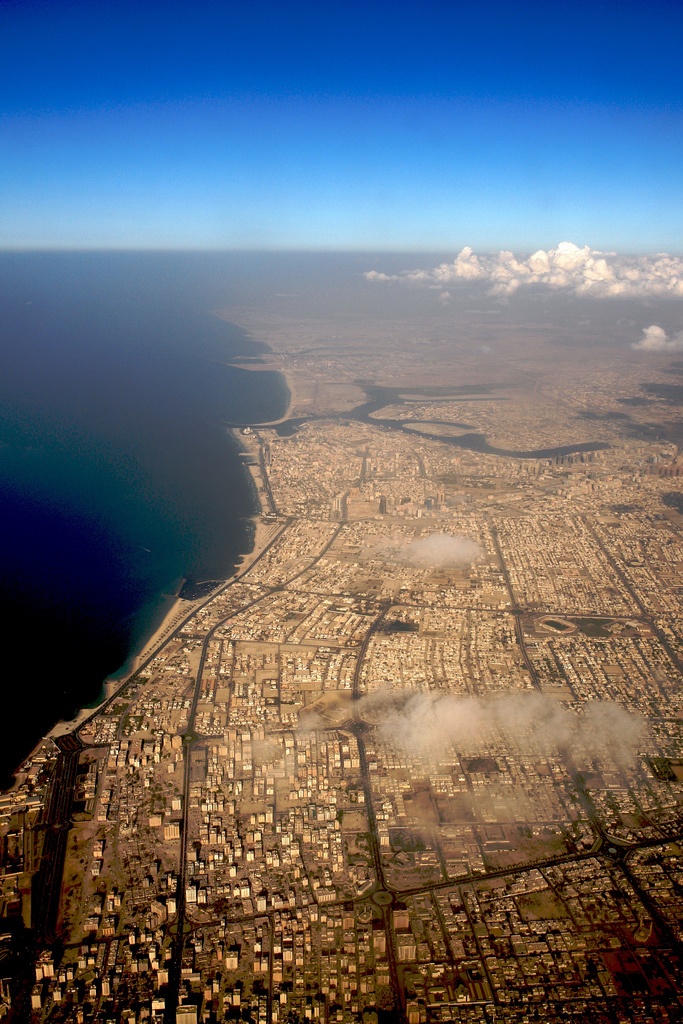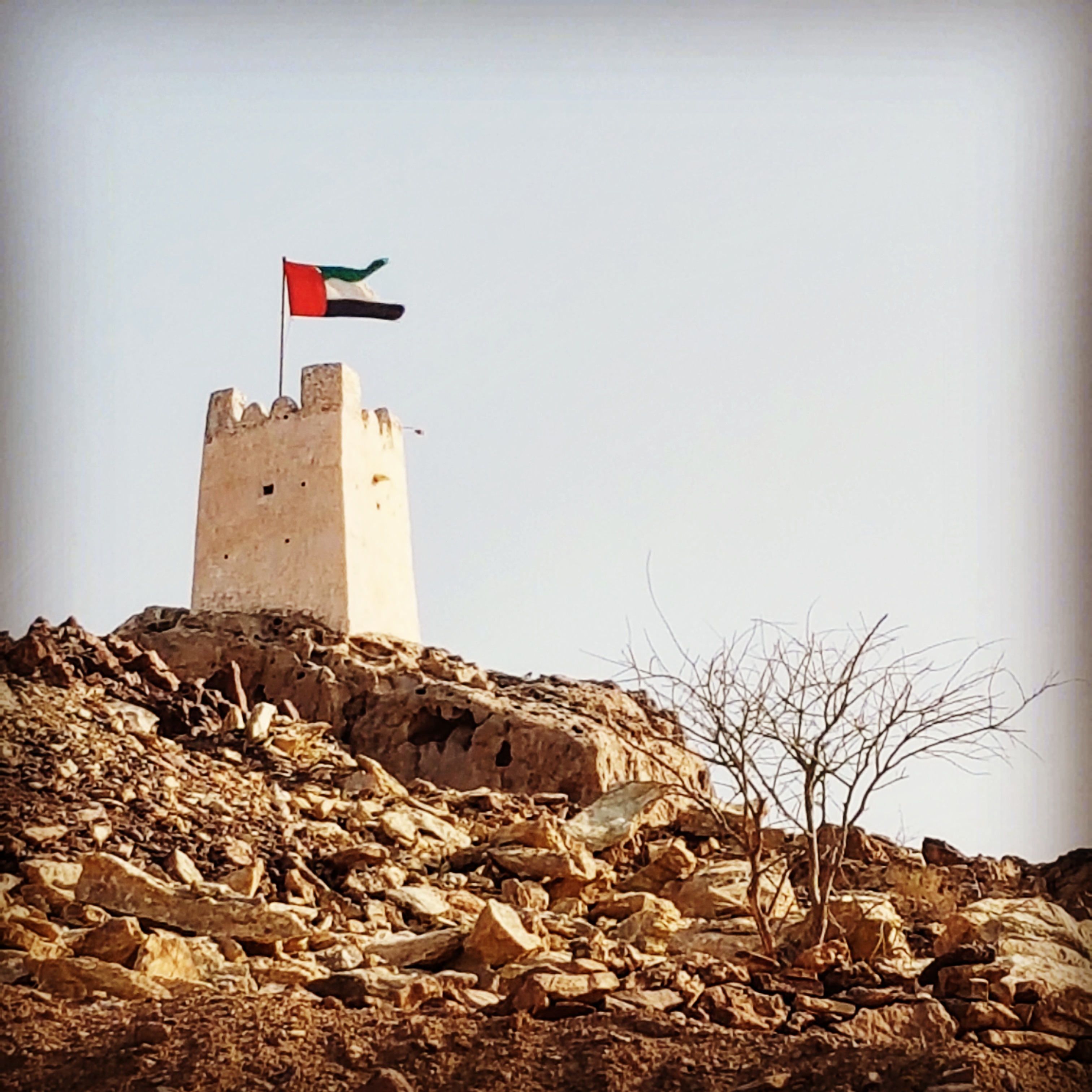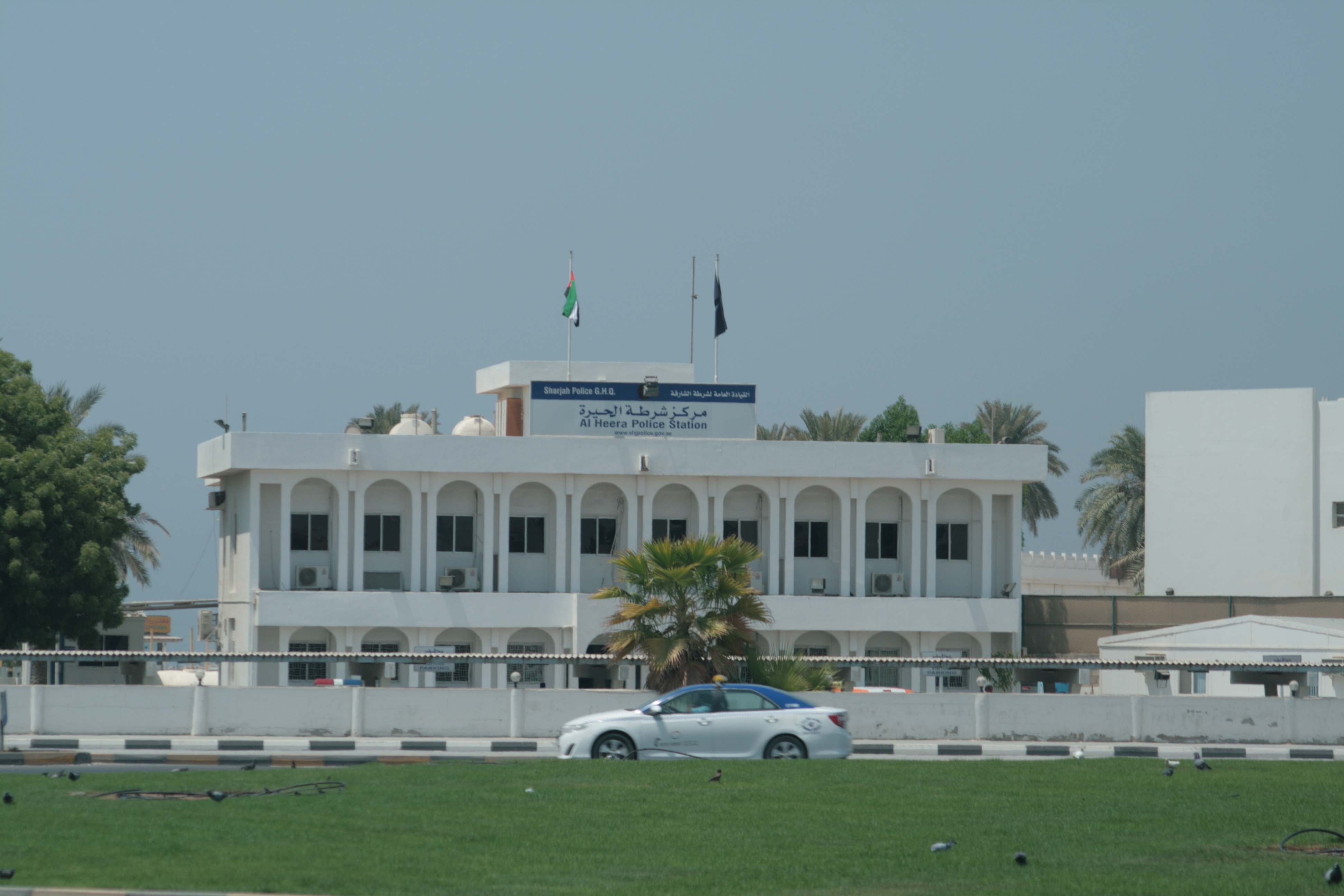|
Hushur Bin Maktoum
Hasher bin Maktoum bin Butti Al Maktoum () acceded to become the Ruler of Dubai in 1859, following the unexpected death by natural causes of his uncle, Sheikh Saeed bin Butti. Rule Still young at the time of his accession, Hasher ruled over a period of economic prosperity and growth for Dubai. The maritime truce made with the British created an environment where coastal trade could flourish. The diversity of that trade included a lively market for slaves from Africa and elsewhere, and the British, contrary to their original intentions in establishing treaty relations with the Trucial Rulers, found themselves becoming more involved with the activities of the coastal communities. In 1847, they promulgated a treaty for the suppression of the slave trade, which was signed by Hasher and the other Trucial Rulers in 1856. Under Hasher's rule, the disparate economies of the districts around the core settlement of Dubai were brought together, particularly those of Bur Dubai, Deira, Hamriya ... [...More Info...] [...Related Items...] OR: [Wikipedia] [Google] [Baidu] |
Sheikh
Sheikh (pronounced or ; ar, شيخ ' , mostly pronounced , plural ' )—also transliterated sheekh, sheyikh, shaykh, shayk, shekh, shaik and Shaikh, shak—is an honorific title in the Arabic language. It commonly designates a chief of a tribe or a royal family member in Arabian countries, in some countries it is also given to those of great knowledge in religious affairs as a surname by a prestige religious leader from a chain of Sufi scholars. It is also commonly used to refer to a Muslim religious scholar. It is also used as an honorary title by people claiming to be descended from Hasan ibn Ali and Husayn ibn Ali both patrilineal and matrilineal who are grandsons of the Islamic prophet Muhammad. The term is literally translated to " Elder" (is also translated to "Lord/Master" in a monarchical context). The word 'sheikh' is mentioned in the 23rd verse of Surah Al-Qasas in the Quran. Etymology and meaning The word in Arabic stems from a triliteral root connected with a ... [...More Info...] [...Related Items...] OR: [Wikipedia] [Google] [Baidu] |
Turki Bin Said, Sultan Of Muscat And Oman
Turki or Torki bin Said al Busaidi, GCSI (1832 – 4 June 1888) ( ar, تركي بن سعيد, bal, ترکی بن سعید) was Sultan of Muscat and Oman from 30 January 1871 to 4 June 1888. He was the fifth son of Said bin Sultan. He acceded following his victory over the Imam Azzan bin Qais at the Battle of Dhank. On Turki's death, he was succeeded by his second son, Faisal bin Turki. Turki had five children: # Sayyid Muhammad bin Turki al-Said (1860–?) # Sayyid Faisal bin Turki al-Said (1864–1913) # Sayyid Fahad bin Turki al-Said (?-1894) # Sayyida Turkia bint Turki al-Said who married a cousin, Sultan Hamad bin Thuwaini Al-Said # Sayyida (name unknown) bint Turki al-Said, who married Talal bin Abdullah Al Rashid, Emir of Jabal Shammar. Honours *Knight Grand Commander of the Order of the Star of India The Most Exalted Order of the Star of India is an order of chivalry founded by Queen Victoria in 1861. The Order includes members of three classes: # Knight Grand ... [...More Info...] [...Related Items...] OR: [Wikipedia] [Google] [Baidu] |
Maktoum Family
Maktoum or maktoom, also known as katem, is a traditional Arabic unpitched percussion instrument. A large round bass drum The bass drum is a large drum that produces a note of low definite or indefinite pitch. The instrument is typically cylindrical, with the drum's diameter much greater than the drum's depth, with a struck head at both ends of the cylinder. Th ..., it is played while held between knees. References Arabic musical instruments Hand drums Drums Unpitched percussion instruments {{Membranophone-instrument-stub ... [...More Info...] [...Related Items...] OR: [Wikipedia] [Google] [Baidu] |
List Of Rulers Of Separate Emirates Of The United Arab Emirates
This article lists the rulers of separate states on the territory of the United Arab Emirates, most of which became its Emirates. List of rulers of the Emirate of Abu Dhabi Al Nahyan of Al Abu Falah dynasty List of rulers of the Emirate of Dubai Al Maktoum dynasty List of rulers of the Emirate of Sharjah Al Qasimi dynasty List of rulers of the Emirate of Fujairah Al Sharqi dynasty List of rulers of the Emirate of Ras Al Khaimah Al Qasimi dynasty Throne vacant from August 1900 until 10 July 1921 List of rulers of the Emirate of Umm Al Quwain Al Mualla dynasty List of rulers of the Emirate of Ajman Al Nuaimi dynasty List of rulers of pre-union regions These are regions that were once independent but now are affiliated with other emirates. List of rulers of Dibba *Under a ''Hakim'' *Reincorporated into Sharjah 1951 List of rulers of Al Hamriyah *Under a ''Hakim'' *Reincorporated into Sharjah 1922 but retained semi-autonomy until the late 1960s. List of rul ... [...More Info...] [...Related Items...] OR: [Wikipedia] [Google] [Baidu] |
Al Maktoum
The House of Maktoum ( ar, آل مكتوم ') is the ruling royal family of the Emirate of Dubai, and one of the six ruling families of the United Arab Emirates. The family is a branch of the Bani Yas clan (a lineage the family shares with the Al Nahyan dynasty of Abu Dhabi), which is a branch of the Al Bu Falasah section of the Bani Yas, a tribal federation that was the dominant power through the region that now forms the United Arab Emirates. History In 1833, about 800 members of the Bani Yas tribe, under the leadership of Maktoum bin Butti, took over the emirate of Dubai and established the Al Maktoum dynasty in the emirate. The Al Maktoum dynasty has ruled Dubai since 1833. Within the federation of the United Arab Emirates, a member of the Dubai ruling family is also de facto always the country's Vice President, Prime Minister and Defence Minister. Family tree The following Al Maktoum family members have ruled Dubai: * 9 July 1833 – 1836 Sheikh Obeid bin Said bi ... [...More Info...] [...Related Items...] OR: [Wikipedia] [Google] [Baidu] |
Emirate Of Ajman
The Emirate of Ajman ( ar, إمارة عجمان; ) (Gulf Arabic: إمارة عيمان emāratʿymān) is one of the seven emirates of the United Arab Emirates. It joined the United Arab Emirates federation on December 2, 1971. It has an area of 259 square kilometers (100 sq mi), which makes it the smallest of the emirates in terms of area, while its population of approximately 504,846 in 2017 according to the Federal Competitiveness and Statistics Center makes it the fourth most populous emirate in the country. It is named after the city of Ajman, which is its seat of government. The main landmass of the emirate is bordered on the north, east, and south by the Emirate of Sharjah. Located on the coast of the Arabian Gulf, Ajman also controls two small inland exclaves: Manama and Masfout, both of which are primarily agricultural.https://www.sea-seek.com/ebook/Persian_-_Arabian_Gulf.pdf Approximately 95% of the population of the emirate resides in the city of Ajman, whic ... [...More Info...] [...Related Items...] OR: [Wikipedia] [Google] [Baidu] |
Masfout
Masfout is a village that forms part of the eponymous exclave of Masfout in Ajman, one of the seven emirates forming the United Arab Emirates. It is surrounded by Ras Al Khaimah, the Dubai exclave of Hatta and Oman (Mahdha Wilayat of Al Buraimi Governorate). It is only accessible from Ajman itself by crossing territories of Sharjah, Ras Al Khaimah, and Oman. At the census of 2017 the city had a population 8988 on an area of 86.59 km², which corresponds to a population density of 103.8 per km². The village has a number of government facilities and municipal centres, including a dedicated courthouse built in 2017. The 13,500 square metre Waraqa Park surrounds the former house of the founder of Ajman, Sheikh Rashid bin Humaid Al Nuaimi. In 2017 the Masfout Heights Resort Project was announced, intended as a mixed use hotel and tourism project. Digging water wells in the exclave was banned by the Ajman government as water depletion became an issue with over 80 unregulated we ... [...More Info...] [...Related Items...] OR: [Wikipedia] [Google] [Baidu] |
Al Buraimi Governorate
Al Buraimi Governorate ( ar, مُحَافَظَة ٱلْبُرَيْمِي, Muḥāfaẓat Al-Buraimī) is one of the 11 governorates of Oman which was split from the Ad Dhahirah Region. Until October 2006, the area was part of Ad Dhahirah Region. At this time, the new governorate was created from the Wilayats (Provinces) of Al Buraymi and Mahdah. A third wilayat, As- Sunaynah, was created from parts of the two. The town of Al-Buraimi is an oasis town in northwestern Oman, on the border of the United Arab Emirates. An adjacent city on the UAE's side of the border is Al Ain. Both settlements are part of the historical region of Tawam or Al-Buraimi Oasis. For many decades, there had been an open border between Al-Buraimi located in Oman and Al-Ain. Effective from 16 September 2006, this border has been relocated to an area around Hilli which is around from the traditional open border. The traditional border near Al-Ain City is now closed to all except to those with valid visas ... [...More Info...] [...Related Items...] OR: [Wikipedia] [Google] [Baidu] |
Oman
Oman ( ; ar, عُمَان ' ), officially the Sultanate of Oman ( ar, سلْطنةُ عُمان ), is an Arabian country located in southwestern Asia. It is situated on the southeastern coast of the Arabian Peninsula, and spans the mouth of the Persian Gulf. Oman shares land borders with Saudi Arabia, the United Arab Emirates, and Yemen, while sharing Maritime boundary, maritime borders with Iran and Pakistan. The coast is formed by the Arabian Sea on the southeast, and the Gulf of Oman on the northeast. The Madha and Musandam Governorate, Musandam exclaves are surrounded by the United Arab Emirates on their land borders, with the Strait of Hormuz (which it shares with Iran) and the Gulf of Oman forming Musandam's coastal boundaries. Muscat is the nation's capital and largest city. From the 17th century, the Omani Sultanate was Omani Empire, an empire, vying with the Portuguese Empire, Portuguese and British Empire, British empires for influence in the Persian Gulf and Indian ... [...More Info...] [...Related Items...] OR: [Wikipedia] [Google] [Baidu] |
Ruler Of Dubai
The Ruler of Dubai is the position of the hereditary monarch and head of government of the Emirate of Dubai, one of the six ruling families of the UAE. The Ruler is also considered the head of the House of Maktoum, the royal family of Dubai. After the unification of the Emirate of Dubai within the United Arab Emirates, the Ruler of Dubai nominally assumes the position of Vice President of the United Arab Emirates and Prime Minister of the United Arab Emirates and sits at the seat reserved for Dubai at the Federal Supreme Council. History In 1833, a migrating offshoot of the ruling Bani Yas tribe of Abu Dhabi settled to the small fishing village of Bur Dubai where Maktoum bin Butti bin Suhail become the sole Ruler of Dubai by 1836, establishing the Al-Maktoum dynasty. The relatively small Dubai relied on fishing, pearling, and foreign trade between the much larger Al Nahyan dynasty in Abu Dhabi and the Al Qasimi dynasty of Sharjah and establishing good relations with British f ... [...More Info...] [...Related Items...] OR: [Wikipedia] [Google] [Baidu] |
Hatta, United Arab Emirates
Hatta ( ar, حتا) is an inland exclave of the emirate of Dubai in the United Arab Emirates. Formerly an Omani territory, its ownership was transferred to Dubai in or around 1850. Geography It lies to the south-east of Dubai's main territory and is about east of Dubai. It is located relatively high in the Hajar Mountains. It borders Oman to the east and the south, the Ajman exclave of Masfout to the west, and Ras al-Khaimah to the north. History Previously known as Hajarain, Hatta became a dependency of Dubai during the reign of Hasher Bin Maktoum after the Omani Sultan Turki bin Said transferred the territory, finding himself unable to defend it against the Na'im of Buraimi, who had settled neighbouring Masfout (today a part of the emirate of Ajman). The village was still called Hajarain as recently as 1906. The old village of Hatta includes two prominent military towers from the 1880s, a fort from 1896 and the Juma mosque, which was built in 1780 and is the oldest build ... [...More Info...] [...Related Items...] OR: [Wikipedia] [Google] [Baidu] |
Al Heera
Al Heera is a suburb in Northern Sharjah (emirate), Sharjah in the United Arab Emirates, traditionally home to the Darawishah, part of the Al Bu Shamis section of the Na'im tribe. At one stage declaring its independence from Sharjah, with its own Sheikh, it formally became part of the Emirate of Sharjah in 1942 on the death of its Ruler, Abdulrahman Al Shamsi. A coastal settlement with a small harbour formerly used by a number of fishermen and pleasure boat owners, its main distinguishing feature today is its police station, converted in 2019 into the 'Al Heera Literature Society' building. The original coastal fishing village, built mainly of traditional Emirati adobe and coral houses, sat along the corniche in the area immediately behind the Al Heera Police Station but fell into disuse and was home to taxi drivers and illegal labourers through the 1990s until it was cleared. Little remains today to mark where the original settlement existed. History Al Heera is first mentioned ... [...More Info...] [...Related Items...] OR: [Wikipedia] [Google] [Baidu] |





